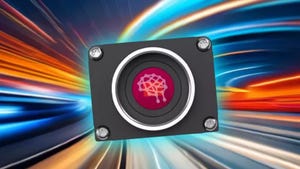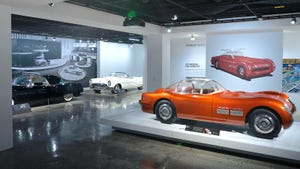February 14, 2011

GeneralMotors has expanded its GE Proficysoftware solution to control lighting and other big energy consuming equipmentin its assembly plants, saving energy costs and considerably reducing itscarbon footprint. With a few million square feet of floor space, General Motorsrealized that if they tied the lights (except for security lighting) to theschedule of the conveyor, they could reduce energy consumption in the plant.
Proficy CIMPLICITY software from GEIntelligent Platforms controls the conveyors in the plant, so GM managersapproved an application based on CIMPLICITY that schedules the lights tocoincide with conveyor operation. And it also led to other discoveries ofpotential energy savings.
"Everything in a vehicle assembly plant istied to the conveyor," says Mike Durak, global information technology managerfor General Motors. "A hidden benefit was that once we scheduled the conveyorwe had a good view into what the plant was doing, so we were able to schedulethe on and off of big energy consumers in the plant like air supply houses onthe roof, ovens in the paint shop, lighting, water and compressed airgenerators."
The savings comes from the operators andmanagement team being able to make more informed decisions with real-timevisibility technology, and control millions of square feet of plant floor spaceusing information from its client/server based HMI/SCADA solution. In GM'scase, the team can manage certain parts of the factory or the whole plant fromany location.
"The biggest enabler for General Motors isthat they were already using CIMPLICITY not only as a centralized HMI/SCADAsystem and production tracking/scheduling but also for monitoring andcontrolling their lighting and equipment as well," says Gimmi Filice, HMI/SCADAproduct manager for GE Intelligent Platforms. "Essentially they were able totie these two systems together."
Filicesays that generally, if customers start tracking and measuring energy usage, itprovides a way to start looking at how to improve usage and develop a businesscase to reduce energy costs. From a general perspective, if you think about thefacility and its manufacturing equipment, they are typically very differentsystems managed by different people, and they tend to be separated. One of theapproaches companies need to look into is how to tie those systems together.
For General Motors, it worked out wellbecause different groups within GM using the same software made it is easier toconnect the pieces. They were able to achieve a fast payback and a five toseven times return on investment (ROI) very quickly. But Filice says the onlyway other companies can achieve improved results is to make it an objectivefrom a manufacturing perspective.
"GM was already doing lighting controlthrough CIMPLICITY, even though different groups were managing the lightingversus managing the manufacturing facility," says Filice. "They were able tosay a euro ~we know the production schedule, when this line shuts down.' They wereable to get the two systems to talk together and automatically shut off thepower for both the lighting and production equipment."
He adds that connectivity to systems orindividual pieces of equipment is very important. HVAC systems, for example,often use a BACnet protocol within the facility management system. Depending onthe technology implementation, a product like CIMPLICITY may be able to talkover BACnet or another protocol to get information directly from the buildingcontrol unit.
"Our goal is to work one-on-one withcustomers because a lot comes from the companies we are working with in termsof their goals," says Filice. "More companies do have energy goals in place.It's a matter of understanding those goals and figuring the challenges in termsof usage. Many companies don't know the details about usage, so a good firststep is understanding where energy is being consumed."
Employees at GM are not affected by theautomatic shut off of lighting and equipment. From the lighting perspective,lights are turned on two or three minutes before employees arrive at theirworkstation. The general building lighting goes on a few minutes earlier.
"We've also scheduled different turn on/shutoffs on weekends," says Durak. "For instance, ovens in the paint shop need twohours to warm up so we need to take that into account when we turn them off.Therefore, we have different times for end of shift, weekends, extended longproduction, lunch and end of day, just to name a few."
The paint shop in automotive assembly is asignificant energy consumer, because in order to make sure that the car's paintdoes not contain dust or other contaminates in the final product, it isimportant to have the optimum air quality and temperature. Proficy CIMPLICITY isused by General Motors to monitor the paint shop environmental conditionsalerting the paint shop staff when process circumstances begin to trend out ofacceptable ranges.
With its less than six month payback and lowcost to implement, the solution is now rolling out to 20 plants within the GMfamily. Example annual savings versus one-time implementation costs atindividual plants include:
For weld water pumps/cooling tower/fans,chilled water and exhaust fans, annual savings 7 times greater
For hydraulic pumps, ovens, weld waterpumps/cooling towers/fans, annual savings 4 times greater
HVAC and line lighting savings are 5 timesgreater
Ventilation, line lighting, airsupply/exhaust savings are 5 times greater
About the Author(s)
You May Also Like





